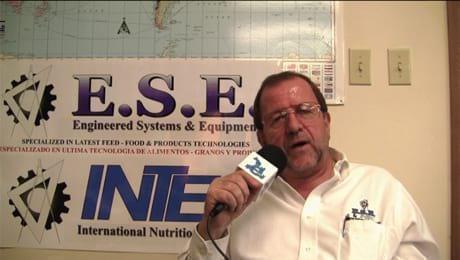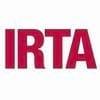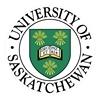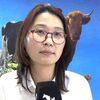Explore all the information on
Feed formulation
Welcome to the page about Feed formulation of Engormix; a source of knowledge on Feed formulation.
Introduction In developing countries, the poultry industry is experiencing some critical issues with animal feed prices, which are unpredictable in the current scenario, as raw ingredients, primarily corn and soybean, have been increasing in price day by day (Alagawany and Attia 2015). As a result, there is a need to consider some low-cost resources, such as agricultural by-products and other crops, which are significantly less expensive than conventional feed stuff. As a result,...
Comments : 0
Recommendations: 1
Introduction Creatine (essential for energy metabolism) and glutathione (GSH; an important non-enzymatic antioxidant) are major metabolites of glycine [the simplest amino acid (AA)] in animals (Fig. 1). Specifically, arginine:glycine amidinotransferase (AGAT) and guanidinoacetate N-methyltransferase (GAMT) convert glycine into creatine in the presence of arginine and methionine, whereas γ-glutamylcysteine synthetase and glutathione synthetase catalyze the formation of GSH...
Comments : 1
Recommendations: 0
Charles Starkey, VP of Scientific and Regulatory Affairs at the North American Renderers Association (NARA), speaks about the relationship between the concept of One Health and Rendering...
Comments : 0
Recommendations: 0
Charles Starkey, VP of Scientific and Regulatory Affairs at the North American Renderers Association (NARA), talks about the benefits of rendering and sustainability...
Comments : 0
Recommendations: 1
.jpg&w=3840&q=75)

Trade, regulations and current challenges in the rendering industry
Suggested link
Charles Starkey, VP of Scientific and Regulatory Affairs at the North American Renderers Association (NARA), talks about the Lifecycle data on the sustainability of Rendered Products of Pet Food...
Comments : 0
Recommendations: 0
In the past, nutritionists did not pay attention to fibre in poultry feed formulations. Step by step the researcher as well as the industry in this decade has realised the importance of fibre in a poultry feeding strategy. The use of fibre in poultry has been, and still is, a major research topic at universities around the globe. Professor Mateos group from Spain as well as Prof. Svihus from Norway did a lot of research to explore the effect of different fibre sources on poultry health...
Comments : 4
Recommendations: 7
Shrimp are external masticators, meaning that they chew their feed outside their mouth and will not ingest the feed at once. Shrimp prefer soft pellets. Typically,...
Comments : 4
Recommendations: 0
4.1 Introduction The metabolism of most nutrients in domestic dogs and cats is similar to that in other mammals (Baker and Czarnecki-Maulden 1991). Thus, the qualitative dietary requirements of dogs and cats for most nutrients [e.g., amino acids (AAs) that are not formed de novo in animal cells] are similar to those for omnivores (e.g., humans and pigs). However, dogs and cats have a relatively short digestive tract (He et al. 2024) and have evolved to have some unique feeding...
Comments : 1
Recommendations: 0
.jpg&w=3840&q=75)

Trade, regulations and current challenges in the rendering industry
Suggested link
1. Introduction Increased atmospheric emissions of greenhouse gases (GHGs), such as nitrous oxide (N 2 O), carbon dioxide (CO 2 ), and methane (CH 4 ), are the primary cause of climate change. These emissions result in unpredictable and erratic rainfall, floods, and droughts [1]. In 2020, agriculture contributed 5865.47 MtCO 2 e, representing 12.34% of its total emissions (47,513.15 MtCO 2 e), including land-use change and forestry...
Comments : 0
Recommendations: 0
Frank Ivey (Feed2Gain) shares his experience and insights on diet changes, cost savings in formulations, as well as how the impact of enzymes is evaluated, in this Engormix interview....
Comments : 0
Recommendations: 3
Introduction: Tropical native legumes are an alternative to cost-intensive conventional feedstuffs. However, the adverse climate in the tropics induces pest and diseases during storage, affecting the nutritional quality of the feedstuff. Ensiling can face this problem and moreover improve digestibility or reduce the content of anti-nutritional factors (ANF). This study inquired the effects of ensiling a mixture of soaked cowpea (CWP) and sorghum (SOR) grains on fermentation...
Comments : 0
Recommendations: 0
.jpg&w=3840&q=75)

Trade, regulations and current challenges in the rendering industry
Suggested link
Pressure on feed cost is and will remain a decisive factor for profitability and sustainability in pork and poultry production. In the backdrop of soaring inflation, other production costs have escalated. Corollary minimizing the costs associated with production has never been of greater importance. Arguably, feed formulation is a precise science that seek to compute combination of feedstuffs to meet the requirement of an animal at least/best cost. Traditionally, the two primary factors that...
Comments : 1
Recommendations: 3
ARLINGTON, Va. – The Institute for Feed Education and Research (IFEEDER) is excited to announce the launch of its blog, IFEEDER Fodder . For nearly 15 years, IFEEDER has been at the forefront of advancing understanding and trust in sustainable feed and pet food supply chain through research and education. The IFEEDER Fodder blog will serve as a platform for industry professionals,...
Comments : 3
Recommendations: 0
Traditionally, milk fever prevention programs have attempted to directly alter Ca status of dairy cows at calving. Common approaches include feeding pre-fresh dairy cows diets containing anionic salts, restricting dietary Ca, feeding hyper-dietary Ca and administering Ca boluses. There is an abundance of research in regard to the mechanisms associated with dietary Ca alteration, dietary cation-anion difference as related to parathyroid hormone and vitamin D and the role they play in the...
Comments : 0
Recommendations: 0
In Spain, the beef fattening system is an intensive system where calves are commonly housed in partially open barns with straw bedding and 40% of the calves, mainly males, are from dairy origin (surplus calves). These calves are transported by road for long hours (up to 3-5 days) from their dairy origin farms to the rearing farm where these calves are fed low amounts of milk replacer for 6-8 weeks and concentrate and straw ad libitum in separate feeders from very young ages with a resulting...
Comments : 0
Recommendations: 0
.jpg&w=3840&q=75)

Trade, regulations and current challenges in the rendering industry
Suggested link
Low protein diets have improved nitrogen (N) utilization, but dietary N for the endogenous synthesis of non-essential amino acids (NEAA) may be limiting. Inclusion of a non-protein nitrogen (NPN) may improve utilization of essential amino acids (EAA). A N-balance study was conducted, where 90 growing barrows were assigned to 1 of 10 dietary treatments. Diets contained no ammonium phosphate (NAP; EAA-N:TN of 0.56) or were supplemented with 1.7% ammonium phosphate (AP; EAA-N:TN of 0.50) with...
Comments : 0
Recommendations: 0
Pharmacological levels of Zn in early nursery pig diets reduce the instance of post-weaning diarrhea and improve performance. However, there are growing concerns with pharmacological levels of Zn and much attention has been directed toward strategies to lower dietary Zn without negatively impacting performance. Diet acid-binding capacity-4 (ABC-4) could be an option to formulate low Zn diets. Dietary ABC-4 is the hydrochloric acid required to reach a pH of 4. The young pig has a limited...
Comments : 0
Recommendations: 0
I. INTRODUCTION The continuous genetic improvements are increasing the first commercial egg size produced and extending the production life of the layer hens worldwide. These improvements are related to what happens at rearing and at the start of the production. Early studies showed that while approximately 60 to 75% of the calcium destined for the shell comes directly from intestinal absorption (Driggers and Comar, 1949), up to 36% could be traced to bones (Mueller et al., 1964)....
Comments : 0
Recommendations: 0
Zinc is an essential trace mineral in broiler nutrition. However, in commercial practice it is often fed above requirements to prevent any deficiencies. To prevent deficiencies, Zinc hydroxychloride (HTM) (IntelliBond®, Trouw Nutrition, Netherlands) provides versatility to optimise the producer’s trace mineral program and allow them to feed levels lower than those commercially used today in the form of sulfate trace minerals (STM). Raw data of nine studies was combined into...
Comments : 0
Recommendations: 0










.mp4&w=3840&q=75)














